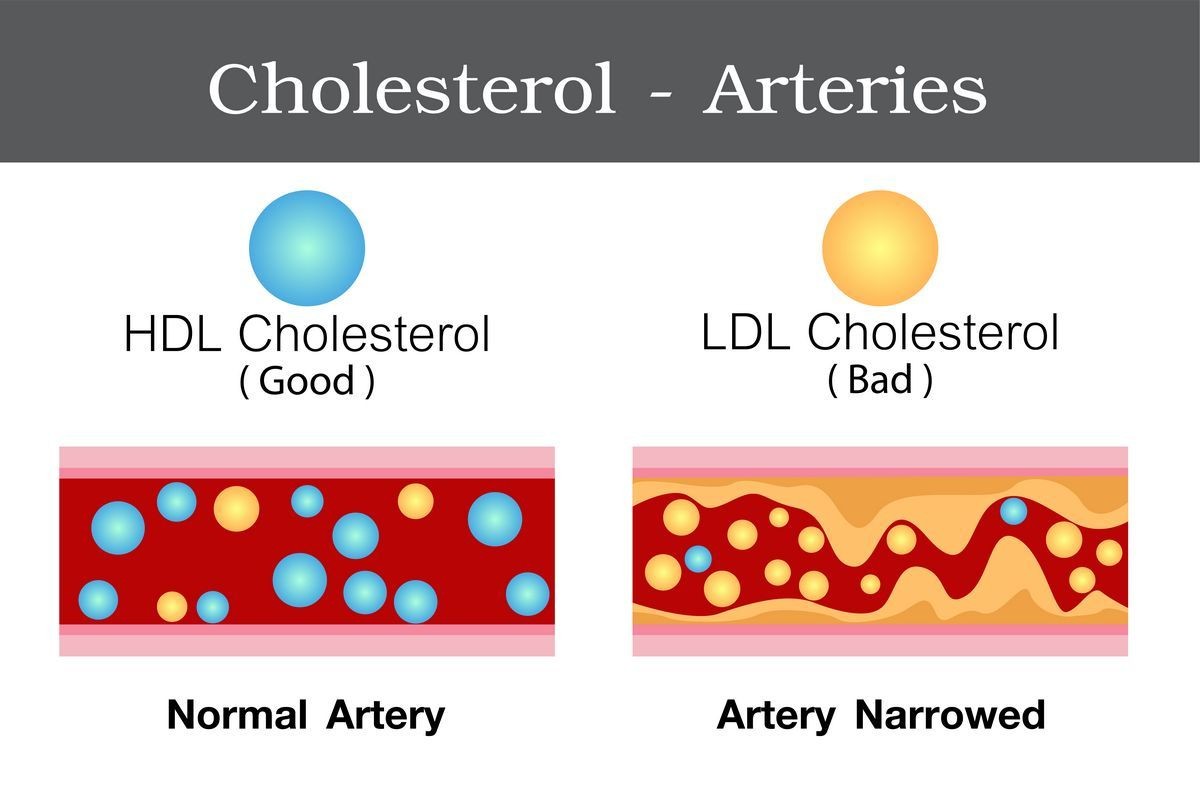
The Statins: Beyond Lowering Cholesterol?
The statins – more about them later – have cholesterol as their prime target.
Cholesterol is widely believed to be the primary contributor to atherosclerosis, the process wherein cholesterol accumulates in artery walls, causing them to harden and narrow. Atherosclerosis in the coronary arteries, which supply blood and oxygen to the heart muscle, can lead to angina and increase the risk of heart attacks. Similarly, atherosclerosis in the carotid and vertebral arteries, which supply blood and oxygen to the brain, increases the risk of strokes.
Reducing cholesterol, especially LDL ("bad") cholesterol, is undoubtedly beneficial. It helps prevent and potentially reverse atherosclerosis, reducing the risk of heart attacks.
In the 1970s and 1980s, studies on diet and lipid-lowering agents (like niacin and clofibrate) were inconclusive, failing to prove that lowering blood cholesterol prolongs life. While deaths related to heart attacks slightly decreased, there was an apparent increase in deaths due to cancer and other causes.
Only within the past decade has conclusive evidence emerged, proving that medications, particularly the HMO-CoA reductase inhibitors known as statins, can effectively lower LDL cholesterol. Moreover, reducing LDL cholesterol has been proven to lower the risk of heart attacks and extend life. Numerous critical studies support the use of statins.
Now, in the 90s, it has become commonplace to not only follow a low-cholesterol, low-saturated fat diet but also take statin medications to reduce cholesterol levels.
However, there is much that we still don’t fully understand about statins. Biomedical scientists are questioning whether statins solely prevent heart attacks by lowering cholesterol or if there are other beneficial effects on blood vessels.
Statins act by inhibiting an enzyme called HMG-CoA reductase, which is involved in cholesterol synthesis. By inhibiting this enzyme, the body’s ability to produce cholesterol is hindered.
The liver is the primary site for cholesterol production and also the primary site of action for statins. Statins lower total and LDL cholesterol by blocking the liver’s cholesterol production.
In addition to lowering LDL cholesterol, statins also lower triglycerides and increase HDL ("good") cholesterol. While LDL cholesterol contributes to atherosclerosis, HDL cholesterol removes cholesterol from artery walls, protecting against it. Higher levels of HDL cholesterol are desirable.
Although various statins differ in their ability to lower LDL cholesterol, raise HDL cholesterol, and lower triglycerides, it is not yet clear if their effectiveness in preventing and reversing atherosclerosis correlates with these variations.
Simvastatin (Zocor) was one of the first statins to be examined. The Scandinavian Simvastatin Survival Study involved 4,444 men and women with known coronary artery heart disease, who were given simvastatin or a placebo for an average of five years. Results showed that the group receiving simvastatin had significantly fewer repeat heart attacks, strokes, and less need for coronary artery bypass surgery. Their overall survival also improved. This study highlighted the value of simvastatin for secondary prevention of heart attacks.
QUESTION
Pravastatin (Pravachol) has been extensively studied among all statins. In the West of Scotland Coronary Prevention Study, 6,595 men with slightly elevated blood cholesterol were placed on a lipid-lowering diet and given pravastatin or a placebo for an average of five years. Unlike the Scandinavian study, the subjects in this study did not have prior heart attacks and most of them had no known coronary artery heart disease. Pravastatin was found to decrease the risk of heart attack, death from coronary heart disease, and improve overall survival. This proves its value in the primary prevention of heart attacks.
Four additional trials in Europe and the United States involving pravastatin for 2-3 years included 1,891 men and women with mildly to moderately elevated total and LDL cholesterol. These levels were lower than those in previous studies. Most participants had documented atherosclerosis of the coronary arteries or prior heart attacks. The pooled results from these trials showed an impressive reduction in heart attacks and strokes, along with improved overall survival, in the pravastatin-treated patients. Pravastatin also proved beneficial for individuals with only modestly elevated cholesterol. X-ray studies confirmed decreased progression of atherosclerosis or even regression in patients treated with pravastatin.
However, the reduction in heart attacks and deaths from coronary heart disease appears to be disproportionate to improvements observed in angiograms, and the survival benefits of pravastatin seem greater than the modest reductions (20-30%) in LDL cholesterol achieved.
Scientists are now wondering if pravastatin has benefits beyond LDL cholesterol reduction. Heart attacks are caused by obstructions in coronary arteries, which interrupt blood and oxygen supply to the heart muscle. Obstructions are typically a result of a blood clot forming next to a ruptured cholesterol plaque on the inner artery wall. Rupture of the plaque triggers platelet aggregation and clot formation. Factors like high LDL cholesterol, artery infections, and inflammation increase plaque instability and the risk of heart attacks. Preventing plaque rupture and inhibiting platelet clotting, as achieved with aspirin, decrease the occurrence of heart attacks.
It is believed that pravastatin stabilizes cholesterol plaques by reducing overall cholesterol content in the plaque and LDL cholesterol specifically.
Pravastatin may also reduce inflammation in artery walls, which is a major contributor to heart disease. Recent reports have linked chronic infection with Chlamydia pneumoniae bacteria to increased atherosclerosis and heart attacks, which can be reduced with antibiotics.
Similar to aspirin, pravastatin may decrease platelet aggregation and blood viscosity.
Reducing LDL cholesterol levels is only part of the story for statins.
Extensive studies on the ability of statins to lower LDL cholesterol are ongoing in the 90s, leaving much more to be explored.
What is the comparative effectiveness of different statins in stabilizing plaques, decreasing inflammation in coronary artery walls, reducing platelet aggregation, and thinning blood? And what other benefits do statins have?
To paraphrase Pascal, the great 17th-century French scientist-philosopher: just like a sphere, the statins come into contact with the unknown as their sphere expands.
To paraphrase Pascal, the great 17th-century French scientist-philosopher: just like a sphere, the statins come into contact with the unknown as their sphere expands.


